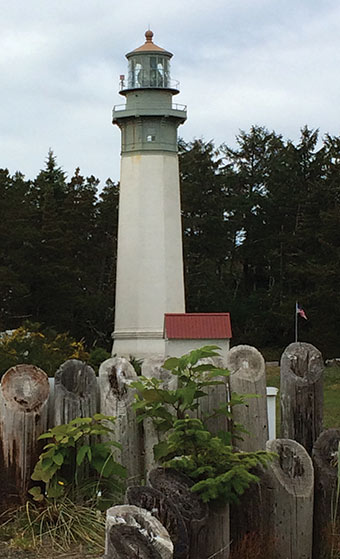 Words: Jonathan Schewe
Words: Jonathan Schewe
Most of us Pacific Northwest maritime heritage enthusiasts have at least a passing familiarity with mainstays like Seattle’s Center for Wooden Boats, Port Townsend’s Northwest Maritime Center, Tacoma’s Foss Waterway Seaport, or Astoria’s Columbia River Maritime Museum. But if you’ve ever been to Poulsbo, spent a weekend at Long Beach and passed through Raymond on your way, or enjoyed a salmon charter out of Westport, you may have wondered about the forces that shaped those communities.
Local maritime museums can help crack the code. More than merely scaled-down versions of the larger, well-known installations, these local venues focus on intriguing details that local knowledge brings to life. It’s not unusual to en-counter staff that are third or even fourth generation descendants of the entrepreneurial settlers who pioneered local nautical enterprise.
Also, where the larger collections are often funded by public grants, private endowments, or corporate sponsors, these local exhibits more often than not eke out an existence from small donations and volunteer efforts.
These one-of-a-kind treasures need our support to remain viable. So the
next time you’re ready for a road trip – by land or sea – block out some time for a visit. You’ll meet enthusiastic guides with the depth of knowledge to satisfy your curiosity about that cluster of rotted pilings, that gracefully ageing netshed, or that exquisitely restored classic workboat or yacht. You just might make a few
new friends in the bargain.
This showcase of local sites and distinct personalities all, range from the sleek staging of the Gig Harbor History Museum to the understated presentation at Dockton, from the lovingly assembled collections at Poulsbo, Ilwaco, and Westport to the eye-opening visual riot at Willapa Seaport.
Visits will go a long way to satisfy the curiosity of anyone who has wondered about the personalities, events, and industries that shaped the Northwest maritime heritage.
Poulsbo Maritime Museum
The next time you’re in Poulsbo, dare to peek behind the curtain of Scandinavian kitsch that decorates Front Street. You’ll discover a cache of nautical history wider than a kringle and deeper than a barrel of lutefisk.
A logging and farming community also supported a small but active fishing fleet, Poulsbo gained larger West Coast notoriety in when 1911 John Edward Shields formed the Pacific Codfish Company and refit a lumber schooner as a codfisher. Over the following decades Shields set numerous catch records at the Bristol Bay fishery where his boats salted fish onboard for packing and shipping from Poulsbo. During the 1933 season alone Shields’ Sophie Christenson accumulated four records: largest total catch made by one boat in one season (453,356 pounds); largest total catch made by one man on one voyage (25,487 pounds); largest catch made by one man in one day’s fishing (1,051 pounds); and largest catch made by one ship in one day (16,581 pounds).

Ronald Young, a local auto mechanic, built 900 copies of the popular recreational fishing boat sentimentally revered as the Poulsbo Boat in his basement shop. UW varsity rowing luminary and Poulsbo native son Norm Sonju captured several rowing titles in the mid-1920s and hydroplane hero Bill Muncey, passing through Poulsbo in the late 1950s, inspired the local Liberty Cup regatta that ran between 1959 and 1964. In 1953 Poulsbo hosted the 22nd International Powerboat Association cruiser race to Vancouver B.C. with 100 boats participating.
In 2010 a group of volunteers including descendants of cod fishing legend J. E. Shields began the restoration of both a Poulsbo Boat and a codfish dory donated by the Seattle Museum of History and Industry. In 2012 the Poulsbo Historical Society began to assemble a maritime/nautical inventory. The Society leased and renovated the original Liberty Bay Bank building to house the collection. The exhibits, dedicated exclusively to Poulsbo’s maritime history, opened to the public in 2015. The lot next door was acquired as well and is in the process of being built out to provide room for restoration projects and display space for the museum’s collection of historic watercraft. The façade will resemble the bow and pilothouse of the Mosquito Fleet steamer Hyak, a onetime transportation mainstay of the community.
The Poulsbo Historical Society’s main exhibits and the restored codfish dory are displayed on the second floor of the city hall building, a short walk from the maritime museum. Visitors can join a summer season guided walking tour that highlights historical places of interest.


